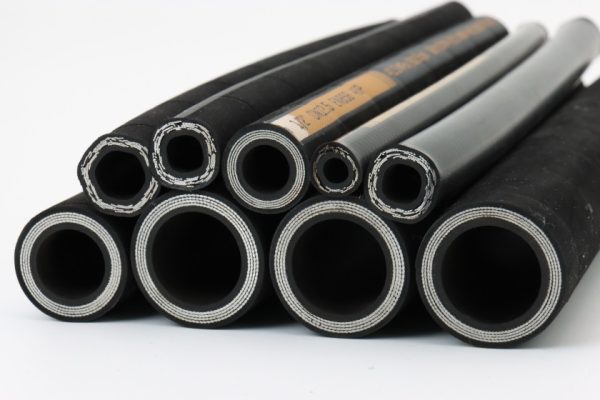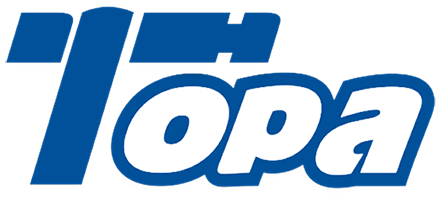Teflon Tape on Brass Fittings: Over-sealed or Essential?
Introduction
Teflon tape, known for its sealing capabilities, plays a crucial role in preventing leaks and ensuring a tight fit in plumbing connections. This thin, white tape is wrapped around the threads of fittings to fill in any gaps that could lead to potential leaks, making it an indispensable tool for many. However, the conversation around its use, particularly with brass fittings, varies with opinions on both its necessity and potential for overuse.
Despite the widespread use of Teflon tape, there has been some discussion as to whether Teflon tape is being overused. Critics argue that in some cases, alternative sealing methods may be more appropriate. On the other hand, proponents argue that Teflon tape is easy to use, effective, inexpensive, and an integral part of achieving leak-free connections.
Understanding Brass Fittings
Definition and Characteristics of Brass as a Material for Fittings
Brass, an alloy of copper and zinc, boasts properties that make it an ideal choice for fittings in plumbing and industrial applications. Its composition can be varied to enhance certain characteristics. Such as strength, machinability, ductility, and corrosion resistance. Brass fittings are known for their durability and reliability in various temperature and pressure conditions. The material’s natural resistance to corrosion makes it particularly suitable for water supply systems, where it does not rust and can withstand the aggressive action of water and chemicals over time.
Common Applications
In plumbing, brass fittings are commonly used for water pipes, gas lines, and for connecting different sections of piping systems together. Their robustness allows for a secure connection, minimizing the risk of leaks and ensuring the longevity of the system. In industrial applications, brass fittings are utilized in machinery for hydraulic and pneumatic systems, automotive engineering, and in the construction of equipment that requires corrosion-resistant and non-sparking properties. The versatility of brass makes it a preferred choice for applications ranging from simple domestic water pipes to complex machinery in manufacturing processes.
Challenges Associated with Sealing Brass Fittings
While brass fittings offer numerous advantages, ensuring a leak-proof seal can present challenges. The material’s hardness and the precision required in threading both male and female components mean that any misalignment or damage to the threads can lead to leaks. Over-tightening is a common issue that can cause deformation of the fitting. But under-tightening may not provide a sufficient seal. Environmental factors, such as temperature fluctuations and exposure to certain chemicals, can also affect the integrity of the seal over time.
The Role of Teflon Tape
Description of Teflon Tape and Its Properties

Teflon tape, also known as PTFE (Polytetrafluoroethylene) tape, is a highly versatile sealing material used in plumbing and various industrial applications. Its main properties include high resistance to chemicals, temperature variations, and electrical conductivity, making it an excellent sealant. Teflon tape is flexible, easy to wrap around threads, and provides a non-sticky surface that can withstand pressures and temperatures encountered in plumbing systems. This white, thin tape is specifically designed to fill in the gaps between threaded pipe fittings, ensuring a secure and leak-proof seal.
How Teflon Tape Is Used to Seal Fittings
To use Teflon tape effectively, it must be wrapped around the male threads of the fitting in a clockwise direction, following the thread spiral. This ensures that when the fitting is screwed into its counterpart, the tape doesn’t unravel, which could compromise the seal. Typically, two to three wraps are sufficient, but this can vary depending on the application’s specific requirements. The tape should cover the entire thread without extending beyond the end of the fitting to avoid any material entering the system. After wrapping, the fitting is then threaded into its partner, compressing the Teflon tape and creating a tight seal.
Benefits of Using Teflon Tape on Brass Fittings
Using Teflon tape on brass fittings offers several benefits:
Enhanced Seal Integrity: Teflon tape effectively seals the threads of brass fittings, preventing leaks that could compromise the system’s integrity. Its chemical and temperature resistance ensures a durable seal that can withstand various operational conditions.
Ease of Use: The tape is straightforward to apply, requiring no special tools or compounds. Its flexibility allows for easy manipulation around fittings of all sizes.
Prevents Galling: Brass fittings, especially when engaged with other metal fittings, can be prone to galling or thread seizing. Teflon tape acts as a lubricant, reducing the risk of damaging the threads during assembly.
The Case for Teflon Tape: Why It's Considered Essential
Historical Background on the Use of Teflon Tape in Plumbing Applications
Teflon tape was introduced to the plumbing industry in the mid-20th century, revolutionizing the way fittings and threaded connections were sealed. Prior to the introduction of Teflon tape, plumbers relied on traditional methods such as hemp and paste to seal threads. While these methods were effective, they had limitations in terms of durability and ease of use. The advent of Teflon tape provided a cleaner, more reliable, and easier-to-use solution for sealing pipe threads, and it quickly became a staple in plumbing toolkits around the world.
Technical Analysis
Teflon tape enhances seal integrity through several mechanisms:
Filling Gaps: By wrapping Teflon tape around the male threads of a fitting, it fills the gaps and voids between the male and female threads, preventing leaks.
Lubrication: The tape also acts as a lubricant, allowing for a tighter fit by reducing the friction between threads. This makes it easier to achieve the optimal level of tightness without risking damage to the threads themselves.
Chemical Resistance: Teflon’s chemical inertness means it doesn’t react with the vast majority of substances it might come into contact with, ensuring the seal’s integrity isn’t compromised by corrosive substances.
Temperature Resistance: Its ability to withstand extreme temperatures without degrading ensures that the seal remains intact across a wide range of operating conditions.
Expert Opinions and Industry Standards Supporting Teflon Tape Usage
Experts in plumbing and related fields widely endorse the use of Teflon tape for its reliability and versatility. Industry standards, including those set by organizations such as the American Society of Mechanical Engineers (ASME) and the International Plumbing Code (IPC), implicitly recognize the value of PTFE tape in ensuring leak-proof connections. Professionals appreciate Teflon tape not only for its performance but also for its ease of use, which allows for quick and clean installations and repairs.
In addition to expert endorsements, countless empirical experiences from plumbers and engineers further cement Teflon tape’s essential role in modern plumbing practices. Its widespread acceptance and use across the industry are testament to its effectiveness and indispensability in creating durable, reliable seals in a variety of applications.
Counterarguments: The Case Against Over-Sealing
Concerns over Reliance on Teflon Tape
While Teflon tape is widely regarded as an essential tool for sealing fittings, there are concerns regarding its over-reliance. Critics argue that improper use or overdependence on Teflon tape might mask underlying issues with the fittings themselves, such as poor thread quality or damage. There’s a belief among some professionals that a well-manufactured fitting should not require additional sealing materials to ensure a leak-proof connection. Over-reliance on Teflon tape can also lead to complacency in inspecting and maintaining the quality of the fittings and threads.
Potential Downsides of Improper Teflon Tape Application
Improper application of Teflon tape can lead to several issues:
Leakage: Incorrectly applying Teflon tape, either by wrapping it in the wrong direction, using too little or too much tape, can result in leaks. The tape may not fill the gaps effectively, or it could bunch up and create channels for water to escape.
System Contamination: Excess Teflon tape can dislodge and enter the system, potentially contaminating the fluid inside. This is particularly concerning in systems where purity is critical, such as in food processing or medical applications.
Difficulty in Disassembly: Overuse of Teflon tape can make disassembling the fittings challenging, potentially leading to damage during maintenance or repair work.
Alternatives to Teflon Tape for Sealing Brass Fittings
Several alternatives to Teflon tape are available, each with its advantages and contexts of use:
Pipe Dope (Thread Sealant): A liquid or paste sealant applied to the threads before assembly. It fills gaps effectively and can be used in conjunction with Teflon tape for added security. However, it can be messier and requires more cleanup.
Anaerobic Resin Compounds: These sealants cure in the absence of air and are ideal for permanent installations. They provide a strong, leak-proof seal but are difficult to remove, making them less suitable for fittings that require regular maintenance.
PTFE Thread Sealing Cord: A newer alternative, this cord functions similarly to Teflon tape but is offered in a form that some find easier to apply with more consistent coverage.
Teflon Tape vs Alternative Sealing Methods
Cost:
Teflon Tape: Generally inexpensive and offers good value due to its effectiveness and the small amount required for each application.
Pipe Dope: Similar in cost to Teflon tape, though usage rates may vary depending on the application’s size. Larger applications may require more product, potentially increasing costs.
Anaerobic Resin Compounds: Tend to be more expensive upfront than Teflon tape due to their chemical formulation designed for permanent seals.
PTFE Thread Sealing Cord: Prices may vary, but generally, it’s comparable to or slightly higher than Teflon tape, considering its ease of use and effectiveness.
Ease of Use:
Teflon Tape: Highly user-friendly, requiring minimal training to apply correctly. Its flexibility and adjustability for different thread sizes are significant advantages.
Pipe Dope: Requires a bit more care in application to avoid messiness and ensure an even coat over the threads.
Anaerobic Resin Compounds: Application is straightforward, but timing and curing conditions need to be managed carefully.
PTFE Thread Sealing Cord: Offers ease of use similar to Teflon tape but without the potential for misapplication that can lead to bunching or tearing.
Reliability:
Teflon Tape: Very reliable when applied correctly, providing a leak-proof seal that withstands temperature fluctuations and chemical exposure.
Pipe Dope: Also reliable, with the added benefit of filling larger gaps in threads. However, it can dry out over time, potentially reducing its sealing effectiveness.
Anaerobic Resin Compounds: Offers excellent reliability and a permanent seal, ideal for applications where the connection is not intended to be disturbed.
PTFE Thread Sealing Cord: Provides a reliable seal that is versatile for various applications, similar to Teflon tape.
Long-Term Performance:
Teflon Tape: Performs wellover the long term, especially in applications with minimal adjustments or disconnections.
Pipe Dope: May require reapplication over time if the seal dries out or cracks, especially in dynamic systems with frequent temperature changes.
Anaerobic Resin Compounds: Excellent long-term performance due to their permanent bonding properties.
PTFE Thread Sealing Cord: Expected to have good long-term performance with the benefit of adjustability and reusability in some cases.
Best Practices for Using Teflon Tape on Brass Fittings
Step-by-Step Guide on Applying Teflon Tape Correctly

Clean the Threads: Before applying Teflon tape, ensure that the threads of the brass fittings are clean and free from debris or old tape. This helps the tape adhere better and provides a smoother surface for sealing.
Select the Correct Tape Width: Use a Teflon tape that matches the width of the threads to ensure complete coverage without excess overlapping or bunching.
Start at the End of the Thread: Begin wrapping the tape at the end of the thread nearest the end of the pipe, leaving the first thread exposed. This helps prevent the tape from entering the pipe system.
Wrap in the Correct Direction: Wrap the tape clockwise around the threads, following the direction in which you will screw the fitting into its counterpart. This prevents the tape from unraveling during installation.
Overlap Each Wrap: Overlap each wrap by about half the width of the tape to ensure full coverage. Typically, 3-4 wraps are sufficient, but this may vary based on the application.
Press Down Firmly: After wrapping, press down firmly on the tape to secure it into the threads. This helps eliminate air pockets and ensures the tape molds properly to the shape of the threads.
Cut the Tape Cleanly: Use a sharp object to cut the tape cleanly after wrapping. Avoid stretching the tape when cutting to maintain its integrity.
Screw the Fitting: Carefully screw the fitting into its counterpart by hand at first to ensure proper alignment, then tighten as necessary with a wrench.
Common Mistakes to Avoid During Application
Overwrapping: Applying too much tape can cause the fitting to be difficult to screw in and may compromise the seal.
Underwrapping: Too little tape may not fill all the gaps, leading to potential leaks.
Wrong Direction: Wrapping the tape in the wrong direction can cause it to unravel when installing the fitting, leading to a poor seal.
Covering the First Thread: Starting the tape on the very first thread can lead to bits of tape entering the system, which might cause blockages or contamination.
Conclusion
In discussing the role of Teflon tape in sealing brass fittings, we have discussed various aspects of it. We encourage our readers to think about their own experiences and the specifics of their projects when deciding to use Teflon tape. We invite you to share your experiences or opinions about using Teflon tape on brass fittings. Have you found Teflon tape to be the best solution for making durable, leak-proof connections? Or, are there other, more effective methods of sealing in your work?
FAQ
It is not always necessary, but it can help ensure a leak-free seal when used properly.
Yes, over-sealing with too much Teflon tape can lead to misalignment and make it harder to tighten the fitting properly.
Typically, 2-3 wraps of Teflon tape are enough to create a secure seal.
If applied correctly, Teflon tape won’t affect performance; it enhances the seal to prevent leaks.
Teflon tape is generally used on threaded brass fittings, but not necessary for flare or compression fittings.
Yes, but be cautious and ensure the tape is applied correctly to avoid leaks under high pressure.
Topa Blog
Find out more about Topa Blog and learn more about specialized hydraulic fittings.









































